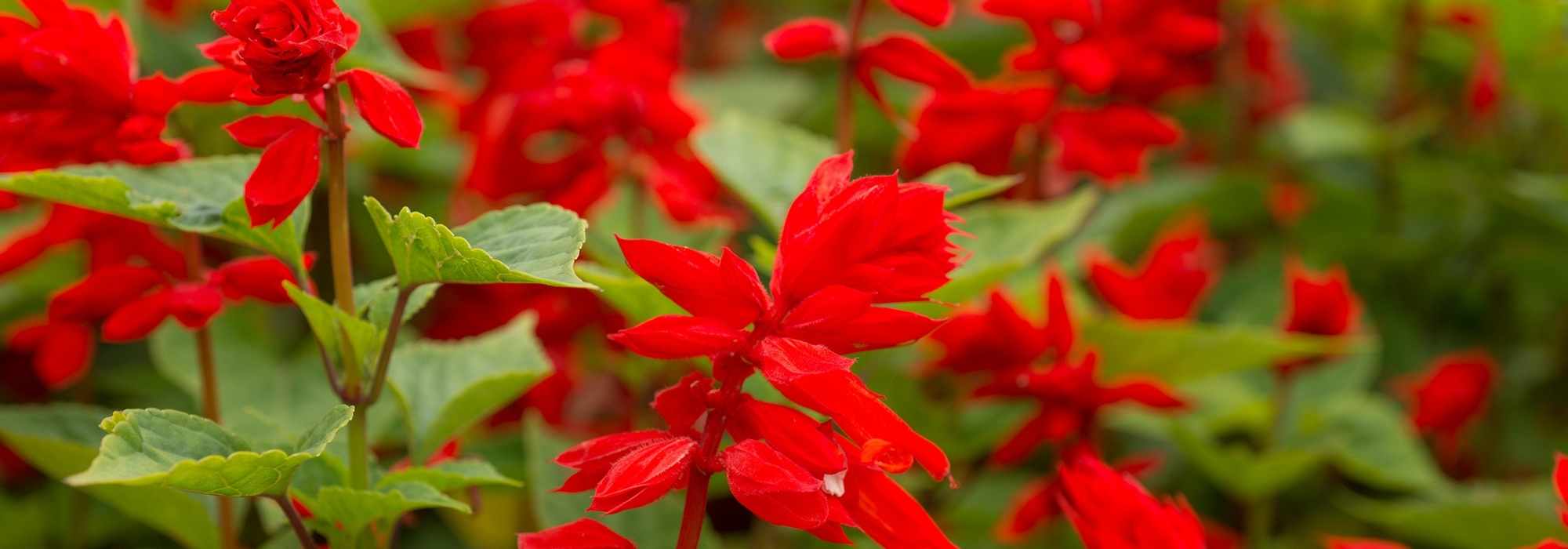
Annual Sage: planting, sowing, and care
Contents
Annual salvias in a nutshell
- Annual salvias captivate with their simplicity and floribundus nature
- Ornamental, they offer splendid spikes in vibrant colours, red, blue, or pink
- Not very hardy, they are grown as annuals in most of our regions except in the south with mild winters
- Easy to grow and low-maintenance, they only require light, well-drained soil to thrive
- They can be grown equally well in beds or pots
The word from our expert
Annual sages are perennial sages that are not very hardy in damp and cold climates. This is why they are most often grown as annuals in the majority of our regions, except in our gardens with mild winters. They grow perfectly in pots, which can be moved to shelter from the harsh winter weather.
Particularly compact varieties, such as Salvia splendens ‘Carambita’, with its intense red flowers, to the Salvia ‘Big Blue’, a beautiful blue annual sage with deep blue spikes, and one of the tallest, Salvia involucrata ‘Bethelii’, reaching heights and widths of 1.25m to 1.50m, are all prized for their flowering, which lasts from spring until the first frosts.
Highly floriferous, annual sages are ideal for adorning flower beds and planters from June to October. Unlike common sage, most annual sages do not have medicinal properties and are grown for ornamental purposes.
These tender but generous perennial plants are easy to grow, provided they are placed in a sunny spot sheltered from cold drafts, in a light, well-draining substrate. They are not very susceptible to diseases and require very little maintenance, only fearing frost.
Discover our annual sages and let yourself be charmed by the generosity and beauty of their flowering!
Description and Botany
Botanical data
- Latin name Salvia
- Family Lamiaceae
- Common name Sage
- Flowering June to November
- Height 0.20 to 1.50 m
- Sun exposure Sun, partial shade
- Soil type Light, fresh to dry, well-drained
- Hardiness -5°C
The sages form a large and diverse family, comprising between 900 and 1000 perennial, annual, shrubby, or biennial species spread across the genus Salvia. They belong to the Lamiaceae family, like catmints and agastaches, for example. Among them, you will find the annual sages, which are mostly non-hardy perennial sages. These annual varieties are bushy and distinguished by their prolific flowering and a beautiful range of colours. Among them are: clary sage (Salvia horminum), mealycup sage (Salvia farinacea), Salvia leucantha, also known as Mexican bush sage, and scarlet sage (Salvia splendens), a natural mutation of pineapple sage. Each has given rise to numerous varieties and hybrids. They originate from subtropical and tropical zones in Mexico, South America, and temperate regions worldwide.
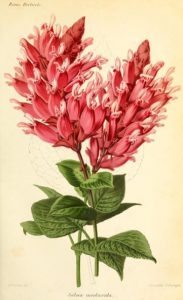
Salvia involucrata botanical plate circa 1850
Annual sages grow quickly to form a beautiful bushy clump with an upright habit, composed of semi-woody quadrangular stems. Generally, the height ranges between 30 and 90 cm in all directions. For example, Salvia splendens ‘Carambita’ is a very new variety of sage, particularly compact, not exceeding 20 cm in height, while Salvia involucrata ‘Bethelii’ reaches about 1.25 m to 1.50 m.
The leaves, opposite, are arranged along the length of these four-angled stems. In mealycup sages, the stems are covered with a light bloom, while in others, they take on purple to violet hues. The leaves are ovate to lanceolate or triangular, with serrated margins, and measure about 4 to 12 cm. This herbaceous foliage is often ribbed and velvety. The foliage is sometimes slightly aromatic, like pineapple sage (Salvia elegans), whose large leaves emit a surprising pineapple or blackcurrant fragrance (see Salvia discolor). They are dark green to light green, sometimes grey-green, covered with white down in mealycup sages. The pineapple sage ‘Golden Delicious’ stands out with its golden foliage. The leaves of some annual sages are edible and can be used fresh or frozen to enhance sweet or savoury recipes or herbal teas.

Left: Salvia farinacea, top right: Salvia leucantha, bottom right: Salvia splendens
Annual sages flower over a very long period, from late spring until the first frosts, sometimes as early as May and as late as October-November. The first cold spells mark their decline. The branches develop floral spikes at their tips. The sages are then covered with abundant flowering at the top of the stems. They have tubular flowers, composed of five petals, which open into two lips, a characteristic of the Lamiaceae family. The lower lip is wider and divided into three lobes. The flowers bloom into a bilabiate corolla, 2 to 8 cm long, nestled in a campanulate calyx, sometimes brightly coloured. This long-lasting flowering offers a variety of colours, pastel or very rich, ranging from white to the most incandescent red, through all shades of pink or blue, sometimes reaching violet-purple in Salvia splendens ‘Gogo Purple‘. Some annual sages feature bicoloured flowers, like Salvia leucantha, which charms with its small white flowers and purple-violet calyxes.
These inflorescences, very melliferous, have the particularity of attracting many pollinating insects. Some emit a pleasant citrus fragrance. They also make very beautiful cut flowers that hold up well in vases.
Main species and varieties
By mixing species and varieties, flowering will be uninterrupted from spring until the first frosts!
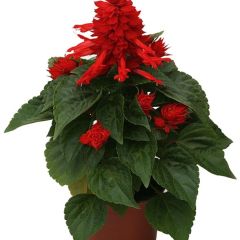
Salvia splendens Carambita
- Flowering time August to December
- Height at maturity 20 cm
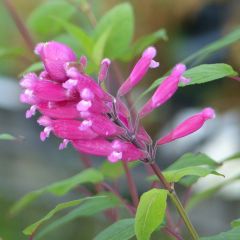
Salvia involucrata Bethelii
- Flowering time August to December
- Height at maturity 1,30 m
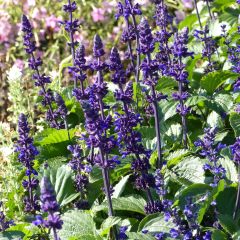
Salvia farinacea Big Blue
- Flowering time August to December
- Height at maturity 50 cm
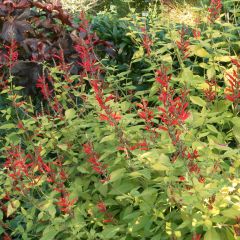
Salvia elegans Golden Delicious
- Flowering time November, December
- Height at maturity 80 cm
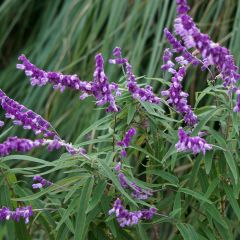
Salvia leucantha
- Flowering time May to November
- Height at maturity 80 cm
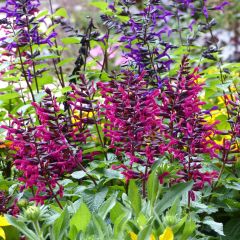
Salvia guaranitica Rockin' Fuchsia
- Flowering time August to December
- Height at maturity 80 cm
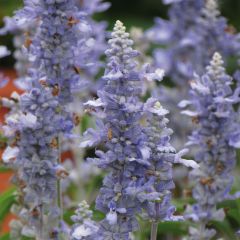
Salvia farinacea Sallyfun Sky Blue
- Flowering time July to November
- Height at maturity 45 cm

Salvia x spendens Gogo Purple
- Flowering time July to November
- Height at maturity 1 m

Salvia buchananii Love and Wishes
- Flowering time August to November
- Height at maturity 55 cm
Discover other Annual Sage
View all →Available in 3 sizes
Available in 0 sizes
Available in 3 sizes
Available in 1 sizes
Available in 1 sizes
Available in 2 sizes
Available in 0 sizes
Available in 2 sizes
Available in 1 sizes
Available in 2 sizes
Planting and sowing annual salvias
Where to Plant Them?
The lack of hardiness is the Achilles’ heel of annual salvias. For most, their hardiness does not exceed -5°C, in sheltered conditions and in dry soil during winter. In colder climates, growing them in large pots that can be stored indoors during winter protects them from severe frosts, allowing these beautiful salvias to thrive across France. In milder regions, such as oceanic climates, outdoor cultivation is entirely feasible, and they can remain in the ground. Some varieties, like mealy salvias, can even be perennial in mild climates, tolerating frosts down to -6.5°C (Zone 9a) or even -12°C.
Plant annual salvias in full sun north of the Loire or in light shade in more exposed regions, in rich but well-drained soil. These annual species require nutrient-rich soil to support their abundant flowering. They thrive in warm, sheltered spots, such as along a south-facing wall in colder regions. They tolerate heat and short dry spells quite well.
They dislike waterlogged soil in winter, which can lead to root rot.
Their continuous flowering, lasting until the onset of autumn, makes them an excellent choice for quickly brightening up pots or planters on terraces or balconies. Smaller salvias also form lovely, colourful bushes in borders and flower beds, while taller varieties are better suited to the middle or back of beds.
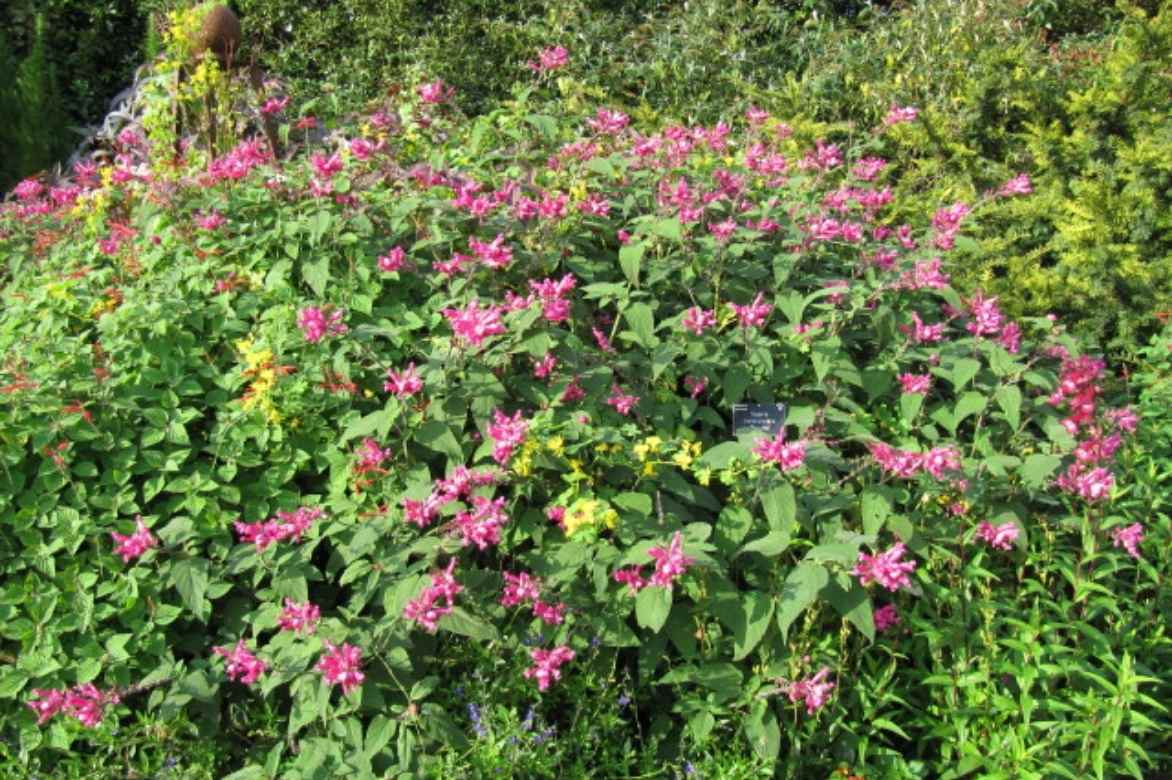
Salvia involucrata ‘Boutin’ (© Leonora Enking)
When to Plant or Sow Annual Salvia?
Our potted annual salvias can be planted after the last spring frosts or in September-October. Annual species can also be sown directly in place in April-May. Earlier sowing in trays during February-March is also an option.
How to Plant Annual Salvias?
In the Ground
If your soil is clay-heavy, improving drainage is essential before planting potted annual salvias: mix in pumice or gravel and compost, as they cannot tolerate waterlogged soil in winter. Space the plants 30 to 50 cm apart, depending on the variety.
- Loosen the soil to the depth of a spade
- Dig a hole 3 to 4 times wider than the root ball
- Add a layer of drainage material at the bottom of the hole
- Remove the plant from its pot and position it with the collar level with the soil surface
- Backfill with soil, gently firming around the roots; you can add compost or potting mix
- Water thoroughly
In Pots or Planters
- Place a drainage layer at the bottom of a perforated container (gravel, pumice, or clay pebbles)
- Plant in a mix of potting compost and garden soil
- Water generously
- Place in a sunny, sheltered spot once all risk of frost has passed
- Water regularly during hot weather and remove saucers
Watch our step-by-step guide to planting annuals!
How to Sow Annual Salvia Seeds?
Under Cover
- Sow annual salvia seeds in February and March in trays filled with compost
- Sow on the surface without covering the seeds, as they need light to germinate
- Keep the tray at 24°C
- Maintain moist soil until germination, which takes 10 to 14 days
- A month later, separate the seedlings and transplant into individual pots with sandy compost
- Keep the seedlings in a bright, cool room at 15-16°C
- Water regularly to keep the soil moist but not soggy, and fertilise with liquid feed
- In May, once the soil has warmed and frost risks have passed, transplant the young plants into the garden or containers
Direct Sowing
You can also sow directly in place, in warmed soil. Add coarse sand if your soil tends to retain water.
- Sow in well-prepared soil, planting seeds in small groups of 4-5
- Cover with a thin layer of compost (3 mm)
- Water lightly
- Thin out to leave one plant every 30 cm
- Water young seedlings to ensure good establishment
- Mix different varieties for vibrant, colourful displays
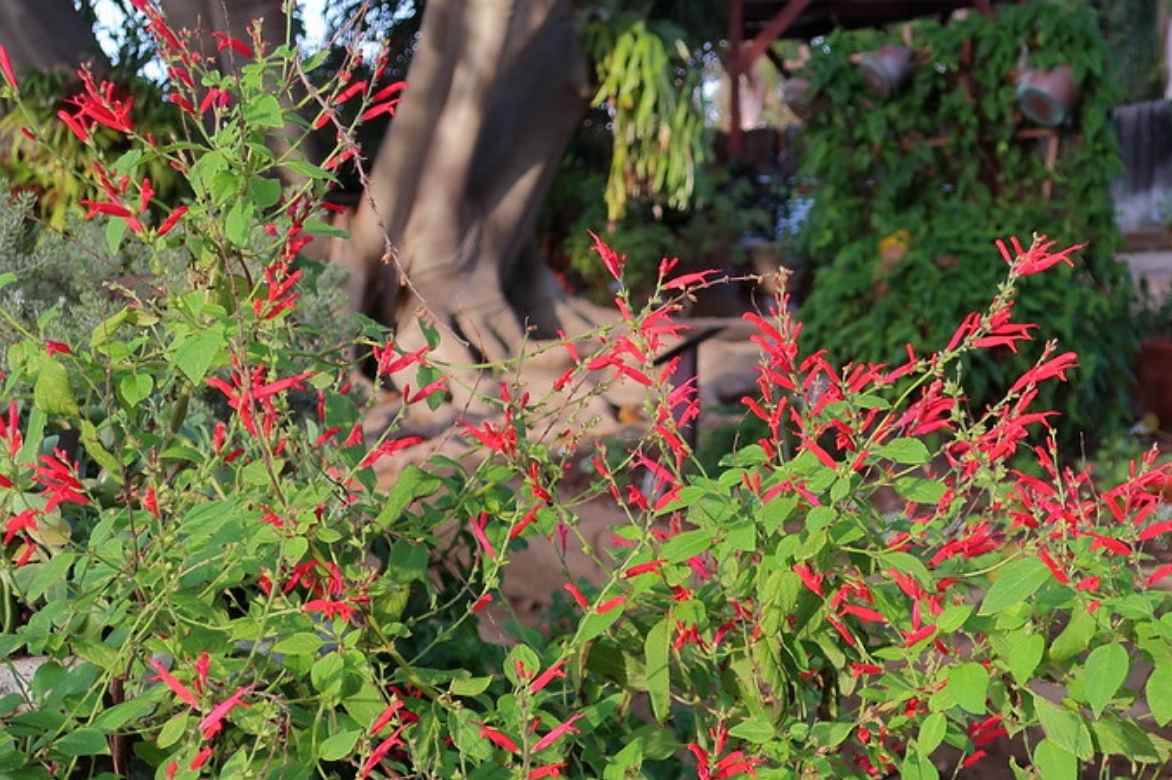
Salvia elegans ‘Golden Delicious’ (© KM)
Maintenance, pruning and care
Annual salvias are highly floriferous plants that grow without requiring much care, provided the soil remains perfectly drained and rich in summer. Throughout their growth period, they must not lack food, water, or warmth.
You can water during prolonged dry spells, but avoid excess to prevent water stagnation. The soil should never be waterlogged. While regular watering is beneficial in summer to support flowering, it’s better to forget to water occasionally rather than overwater. They will tolerate short dry spells fairly well, provided they are watered regularly during intense summer heat.
They only fear frost and simply need protection from the cold. From October to November, in colder regions where they are grown as annual flowers, remove the plants that are outdoors as they will not survive heavy frosts. In regions with mild winters, spread a dry mulch (dry leaves) around the base to protect them from frost.
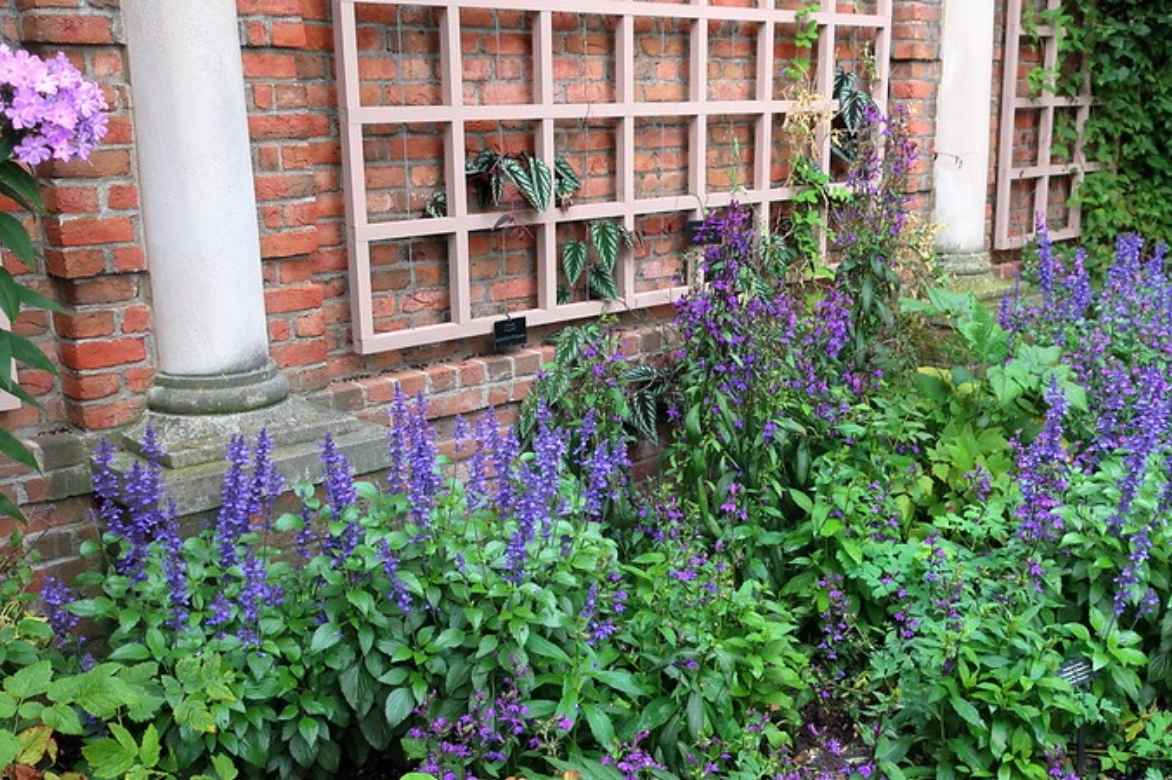
Salvia hybrid ‘Mystic Spire’ © KM
In pots
Water regularly, always sparingly but without letting the growing medium dry out completely between waterings. Never allow water to stagnate in saucers.
Throughout the growth period, add a dose of flowering plant fertiliser, such as geranium fertiliser, to the watering every two weeks.
Protect potted plants from frost with bubble wrap in regions where frost is not too severe, or place them in a sheltered spot, such as a bright conservatory or lightly heated greenhouse, until spring.
When and how to prune annual salvias
- Regularly remove faded flowers to encourage renewed flowering. You can also harvest the seeds to sow the following spring.
- In February-March, use shears to cut back the clump to 20 cm above the ground and remove dead wood.
Diseases and potential pests
Rarely affected by diseases, annual salvias are primarily susceptible to fungal diseases such as botrytis and powdery mildew, which are encouraged by excessive moisture in the soil. In overly wet soil, the plant’s roots can rot: good drainage is essential to prevent these diseases.
In spring, keep an eye out for slugs and snails, which may feast on young shoots.
Multiplication
Annual sages are tender perennials that can be propagated by cuttings, in summer, with semi-hardwood cuttings, under a cloche. To perpetuate them, we also recommend renewing young plants each year from sowing (follow our advice above).
- From June to August, using pruning shears, take stems without flowers by cutting just below a node
- Remove the lower leaves, keeping only 2 or 3 leaves at the top of the stems
- Plant the cuttings in well-draining seed and potting compost
- Place under a cloche without direct sunlight until rooting, which takes 2-3 months
- Water and ventilate regularly
- Keep the cuttings protected from frost in winter, in a bright, unheated room
- Plant in the ground or in pots the following spring, after the frosts
Which plants pair well with annual salvias?
With their simple charm, annual salvias easily find their place in the rustic flowerbeds of a cottage garden. They are commonly found in English cottages and Mediterranean gardens, as these delicate beauties tolerate drought quite well. The blue or white flowering of mealycup sage pairs beautifully with roses, hollyhocks, shrubby lavateras, or highlights the large flowers of peonies in a romantic setting.
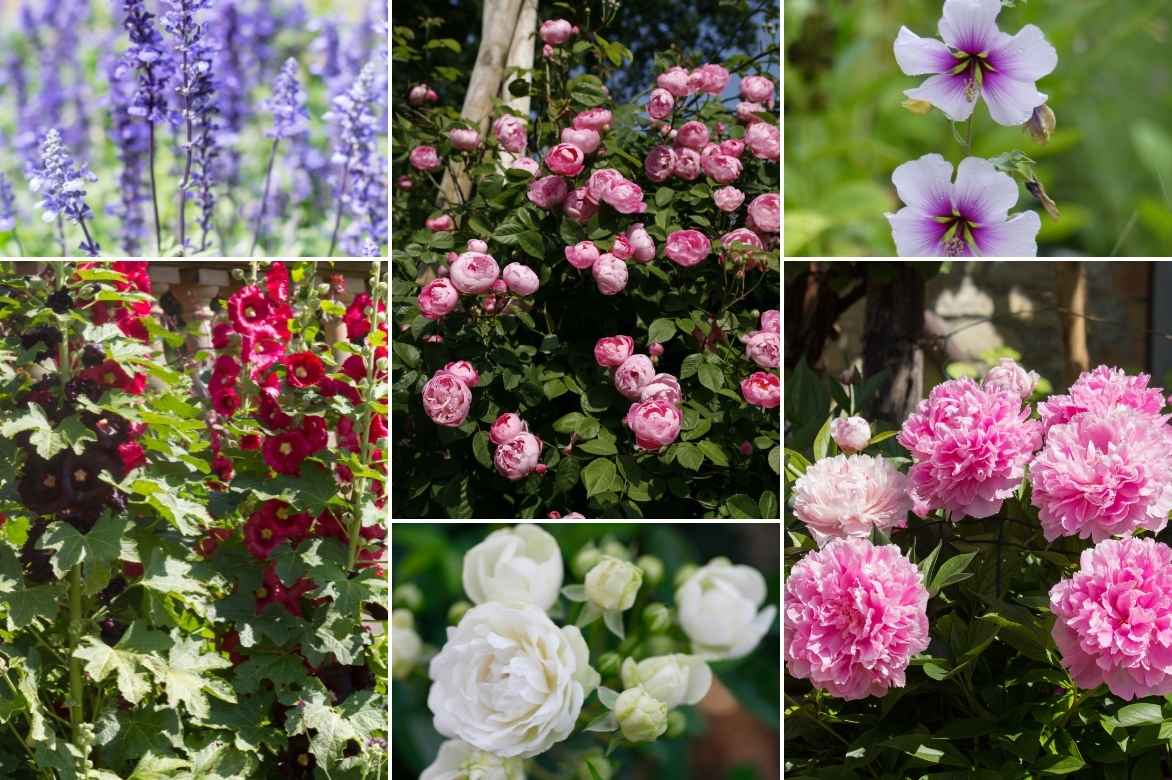
Salvia farinacea, hollyhocks, rose ‘Raubritter’, white rose, Lavatera maritima, and peonies
Annual salvias also feature in our summer-flowering perennial beds, where they seamlessly complement the blue summer blooms of perennial geraniums ‘Rozanne’, Agastache, and perennial flax. Their upright spike-like flower stems add lightness to compositions. They thrive alongside other colourful flowers such as Nepetas, rudbeckias, Echinaceas, Delphiniums, Cosmos, or Dahlias. You can also plant annual salvias alongside lupins and campanulas. Pair them with the blooms of yarrows or purpletop vervain, for a delicate touch, or with simple flowers like scabious and gauras.
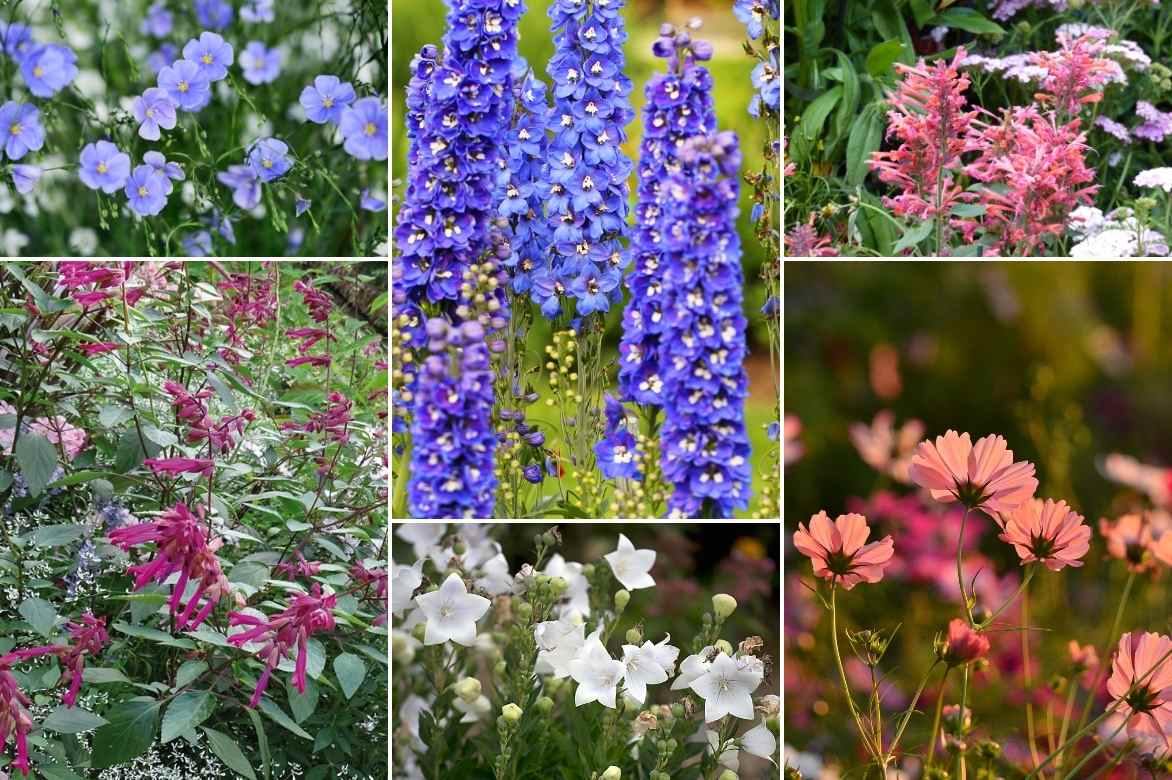
Salvia ‘Love and Wishes’ at the bottom left, alongside perennial flax, Delphiniums, white campanulas, Agastache ‘Kudos Coral’, and Cosmos
The autumn asters (Aster turbinellus, Aster Laevis, Kalimeris mongolica) will accompany annual salvias until the last days of summer, heralding the arrival of autumn.
Along pathways and borders, compact varieties can be planted among snow-in-summer (Cerastium tomentosum) or small ornamental grasses. Their pairing with grasses is stunning, such as with Stipa tenuifolia or Miscanthus.
In pots, the smaller red varieties will thrive alongside lobelias, an Imperata cylindrica ‘Red Baron’, and Heucheras.
Useful resources
- Discover our wide range of annual sages and our sage collection!
- Explore our 7 ideas for creating beautiful summer planters
- Our advice sheet: Blue Sages: The 5 Best Varieties
- Subscribe!
- Contents
































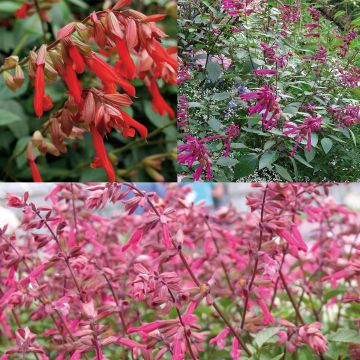
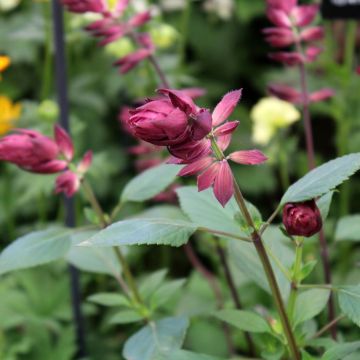

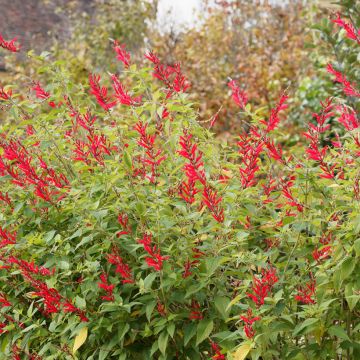

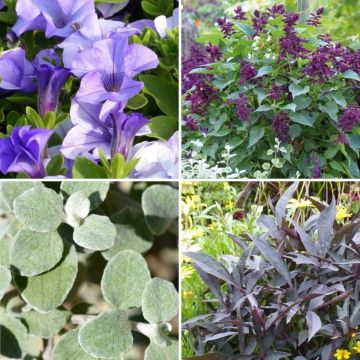
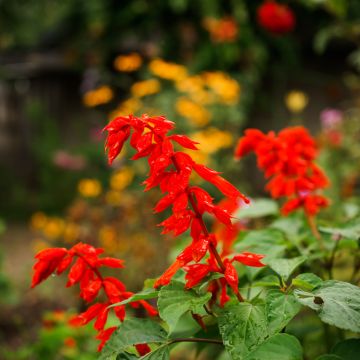
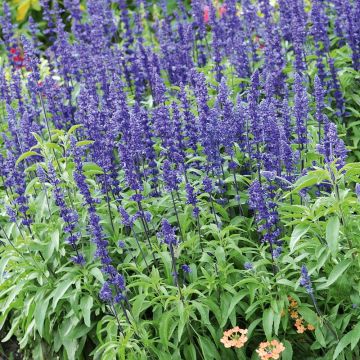
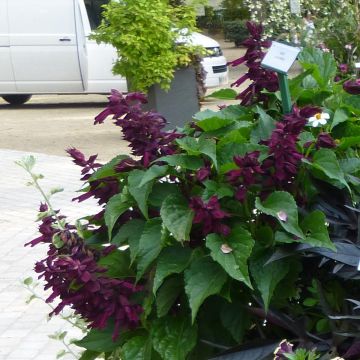
Comments